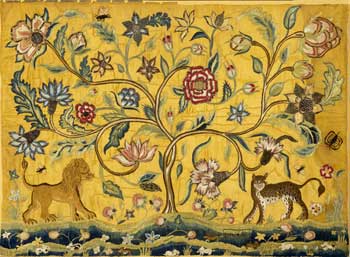East Meets West
European and American decorative arts of the 18th and 19th centuries reflect Westerners' fascination with the culture of the East. After the establishment of the East India trading companies in England in 1600, and the Netherlands in 1602, a steady influx of luxuries from India and China-including teas, spices, porcelains, lacquer wares, silks, and colorful cotton fabrics-reached Europe. As early as the 17th century and throughout most of the 18th century, Asian goods came to America by way of Europe and England. To meet and profit from the demand for these commodities, artisans in both Europe and the colonies soon began to imitate Eastern wares. Conversely, Western designs, including family coats of arms, were sent to China to be reproduced on goods made for the Western market.
The production of porcelains made specifically for the American market significantly increased after 1784, when the Empress of China sailed out of New York to become the first American ship to travel to Canton. This voyage paved the way for a direct trade route between America and the East. Many export porcelains were decorated with emblems of the new American nation, such as eagles, flags, and the great seal of the United States.


